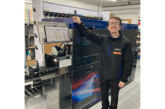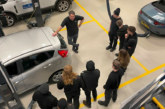
A 1958 Rolls Royce Silver Cloud and 1969 Jaguar E-Type are two ‘reman and return’ examples that Autoelectro is said to have already encountered during this classic car season. Harnek Bhogal reveals why the supplier claims to be the “go-to” for customers.
“We have remarkable pedigree in catering the rarest and hardest-to-find applications. Naturally, this means that a lot of our enquiries are specialist and classics make-up a significant part of that – particularly this time of year!”
Swing in classic car momentum
Analysing its own data, Autoelectro has reportedly observed a trend in the marketplace; it believes there has been a shift in attitude towards classic car motoring. Harnek elaborated by pointing to the real-world impact of various events in recent years.
Harnek said: “The world is continuing to recover from the COVID-19 pandemic, while recent supply chain disruptions as a result of the war in Ukraine, economic sanctions of Russia and high inflation rates have affected the economic balance of society.
“Consequently, we have found that some consumers with disposable income for classics have now taken the plunge and decided to live the dream, as their buying options for a new car and the lead time associated with that have been narrowed.”
Autoelectro claims it is primed to handle this increased demand; it has a warehouse facility that provides availability, meaning a starter motor for a Porsche 911 Turbo (930 model) (1977-onwards) or alternator for an Austin Metro (1990-onwards) can apparently be with the customer the next day.
When the unit isn’t in stock, Autoelectro is also said to offer a ‘reman and return’ service, or may have an old core already in stock to manufacture the part. Ultimately, the supplier claims to have the tools and flexibility to deliver for the customer and keep their classic on the road!
What can go wrong?
With any breakdown or issue with a classic vehicle, there can be a combination of factors that contribute to the fault: age-related wear and tear, inadequate maintenance, or outdated components are just some of the likely causes.
Autoelectro recommends regular inspection, professional maintenance and use of quality replacement parts. The remanufacturer believes that, with best practice processes, classic car owners will enjoy many miles of trouble-free motoring.
To offer an insight into what can go wrong for a classic car motorist, from both a starter motor and alternator perspective, Autoelectro lists some common faults:
- Faulty solenoids: Over time, a solenoid’s internal components can wear away or become corroded which can lead to issues. Moisture, dirt or excessive heat can also contribute towards this
- Worn brushes: As vehicles age, brushes can wear down and lose their ability to make proper contact with the commutator, which can result in intermittent starting problems
- Wiring or connection issues: Classic cars can have dated wiring systems that develop into larger issues as they get older. Loose, corroded, damaged or rusted wiring and connections can prevent the starter motor from receiving the required power, again, potentially leading to intermittent starting faults
- Faulty diodes: Diodes can fail on any vehicle for a number of reasons, but due to the age and general use (high mileage) of classics, it is more common due to wear and tear. If a diode fails, it can hamper the alternator’s ability to produce sufficient output required for the vehicle, leading to charging issues
- Worn brushes/slip rings: Similar to the brushes point above. They can wear over time, leading to reduced charging capacity or intermittent charging. Other external factors, such as dust and debris, can accelerate brush/slip ring wear







